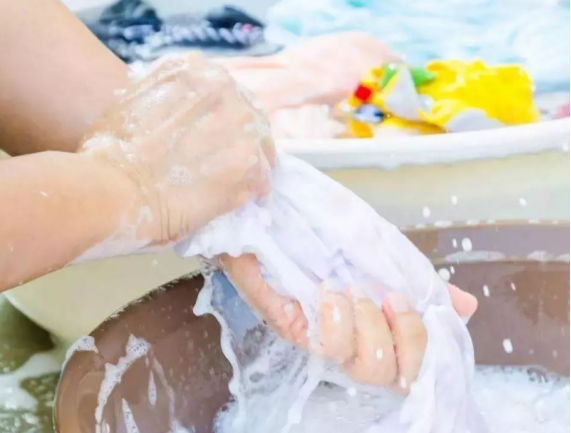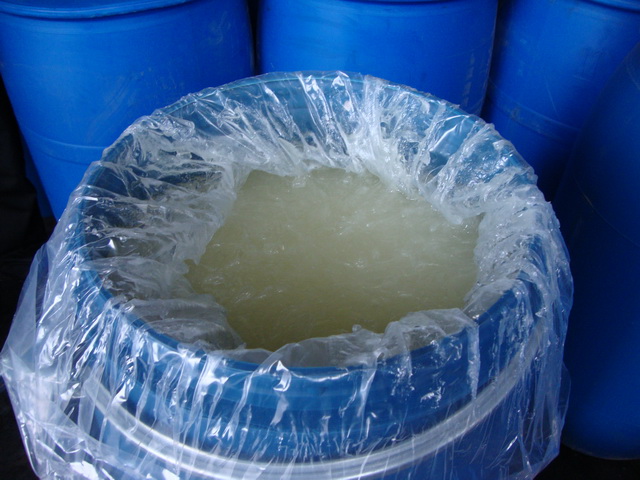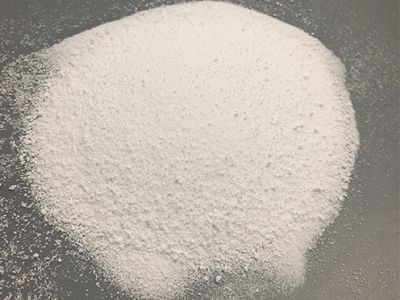What are the regular Detergent Chemicals?
The main ingredients are surfactants and emulsifiers, as well as added flavors. The surfactant contains sodium dodecyl benzene sulfonate, coconut oil fatty acid diethanolamide, triethanolamine, fatty alcohol polyoxyethylene ether, betaine, and the fragrance is selected according to your desired fragrance, which can mask the smell of some chemical materials. ; Finally, add 0.3-0.5% preservative.

Details of commonly used raw materials for detergents:
1. Surfactant
1. Commonly used surfactants
Anionic surfactants: such as sodium alkyl benzene sulfonate (LAS), sodium alkyl sulfonate, sodium fatty alcohol sulfate, sodium fatty alcohol polyoxyethylene ether sulfate (AES), alkanes, Sodium Lauryl Ether Suphate(SLES/AES) , Sodium sulfonate (AOS), etc.
Nonionic surfactants: such as alkylphenol polyoxyethylene ethers, fatty alcohol polyoxyethylene ethers (AEO), alkanolamides, etc.
Polyether: It is a commonly used active substance in the production of low-foaming detergents in recent years. It is generally a product of the copolymerization of ethylene oxide and propylene oxide. It is often combined with anionic surface
Active agent compound, mainly used as defoaming agent.
Amphoteric surfactants: such as betaine, etc., are generally used in low-irritation detergents.

2. Detergent aids
(1) Phosphate
1.Sodium tripolyphosphate (STPP)
Commonly known as: pentasodium;
Molecular formula: Na5P3O11;
Appearance: white powder;
Performance: It can be dissolved in water. The aqueous solution is alkaline and has good complexing ability for metal ions. It can not only soften hard water, but also complex metals in dirt.
It plays a role in disintegrating dirt during the washing process;
Dosage: up to 20~40%.
2.Potassium pyrophosphate
Molecular formula: K4P2O7;
Features: It is easy to absorb moisture, has the ability to complex metal ions such as calcium and magnesium, and has a certain cleaning effect, but it is irritating to the skin;
Usage: Used to prepare heavy-duty liquid detergents, metal cleaners, hard surface cleaners and other cleaning supplies.

3.Sodium hexametaphosphate
Molecular formula: (NaPO3)6;
Advantages: The pH value of the aqueous solution of sodium hexametaphosphate is close to 7, which is less irritating to the skin. It also has the effect of preventing corrosion when the concentration is high. It can be used in neutral and weak alkalis.
It has good complexing ability for calcium and magnesium ions in sexual solutions;
Disadvantages: hygroscopicity and hydrolysis;
Usage: Generally only used in industrial cleaning agents.
4. Substitute for sodium tripolyphosphate
Substitutes for sodium tripolyphosphate mainly include: organic chelates, polymer electrolytes and molecular sieves;
Performance of organic chelates: sealing metal ions in chelating agent molecules through chelation to soften water;
Commonly used organic chelates include: sodium ethylenediaminetetraacetate (EDTA), nitrogen triacetic acid (NTA);
Sodium polyacrylate is mainly developed as an additive in polymer electrolytes;
Performance of sodium polyacrylate: it can be adsorbed on the surface of the items being washed and the surface of dirt, increasing the electrostatic repulsion between the items being washed and the dirt, which is beneficial to the removal of dirt.
Remove. And can increase the dispersion ability of dirt and prevent redeposition of dirt;
Molecular sieves also called artificial zeolites are crystals of aluminosilicates;
Performance of molecular sieve: soften hard water and absorb eluted dirt.
(2) Sodium silicate
Sodium silicate is commonly known as: water glass or bubble alkali;
Molecular formula: Na2O·nSiO2·xH2O;
Performance: Granular solids or viscous aqueous solutions have a buffering effect on the pH value of the solution. The colloidal solution produced by hydrolysis can disperse solid dirt particles.
It has an emulsifying effect on oil stains. Adding water glass to washing powder can also increase the mechanical strength, fluidity and uniformity of powdery particles;
Disadvantages: The silicic acid sol generated by hydrolysis can be adsorbed by fibers and is not easy to wash off. The fabric will feel rough after drying.
(3) Sodium sulfate
Appearance: white crystal or powder;
Advantages: It increases the surface adsorption amount of anionic surfactants and promotes the formation of micelles in the solution, thus reducing the surface tension of the washing liquid, which is beneficial to
It is beneficial to wetting, decontamination and other functions, reducing the viscosity of the material liquid and facilitating the molding of washing powder;
Usage: often added to laundry detergent as filler;
Dosage: The amount added to washing powder can generally reach 20% to 45%.
(4) Sodium carbonate
Commonly known as: soda ash or soda;
Advantages: It can saponify dirt and maintain a certain pH value of the washing powder solution, which is helpful for decontamination and has the function of softening water;
Disadvantages: Strongly alkaline;
Usage: Used for low-grade laundry detergent.
(5) Anti-fouling redeposition agent
Commonly used anti-fouling redeposition agents: carboxymethylcellulose sodium salt (CMC), polyvinylpyrrolidone (PVP);
The mechanism of CMC's anti-dirt redeposition: CMC is adsorbed on the surface of the fiber, thereby weakening the fiber's re-adsorption of dirt. In addition, CMC can remove dirt particles.
Surround it to make it disperse stably in the washing liquid;
Advantages of PVP: strong anti-fouling redeposition ability, good solubility in water, no agglomeration and precipitation when encountering inorganic salts, and good compatibility with surfactants;
Disadvantages of PVP: Expensive.
(6) Bleach and optical brightener
1. Bleach
(1)Sodium perborate
Molecular formula:NaBO3·4H2O;
Performance: Not easily soluble in cold water, soluble in hot water, it decomposes and releases H2O2NaBO2 after being heated in an aqueous solution. H2O2 has a bleaching effect, and NaBO2 also
Has certain cleaning properties;
(2)Sodium hypochlorite
Preparation method: prepared by passing chlorine gas into sodium hydroxide solution;
Performance: It is an oxidizing agent with strong bleaching ability. Its chemical properties are very unstable and it is easy to decompose free chlorine. Only under strong alkaline conditions, sodium hypochlorite is more effective.
for stability;
Usage: Sodium hypochlorite is commonly used as a bleaching agent for textiles in industrial production.
2. Fluorescent whitening agent
The whitening method of adding blue whitening: add a small amount of blue dye to the washing powder to add a trace amount of blue to the fabric, which complements the original yellowish color.
The apparent whiteness is visually improved, but the brightness reflected by the fabric is reduced;
Dosage of fluorescent whitening agent: The amount added in detergents is very small, generally about 1% of the active substances in detergents.
(7) Enzyme preparations
Definition of enzyme: Enzyme is a biological product obtained by culturing bacteria or biologically active substances. It itself is a protein that can react with certain chemical reactions.
catalysis ;
The main enzymes used in detergents are: protease, lipase, cellulase, amylase, etc.;
What aspects should be paid attention to when using enzymes
(8) Antistatic agents and softeners
Cationic surfactants with softness and antistatic properties: dimethyl ammonium chloride distearate, dimethyl octyl ammonium bromide stearate, high carbon alkyl pyridine
Salt, high carbon alkyl imidazoline salt;
It has soft nonionic surfactants: high-carbon alcohol polyoxyethylene ethers and amine oxides with long carbon chains.
(9) Foam stabilizers and foam suppressors
Commonly used foam stabilizers: betaine-type amphoteric surfactants, alkyl alcohol amides, lauryl dimethyl amine oxide and myristyl dimethyl amine oxide;
Commonly used foam inhibitors: polyether and silicone oil.
(10) Solvents and co-solvents
Commonly used solvents are: 1.Pine oil: itself insoluble in water, but can mix organic solvents and water, suitable for making solvent-detergent mixtures, if not
Add pine oil, and the mixture becomes two phases; 2. Alcohols, ethers and greases: polar solvents such as low molecular alcohols, ethylene glycol, glycol ethers and greases have certain water solubility and can
Combine water and solvent; 3. Chlorinated solvents: such as trichlorethylene, tetrachlorethylene, etc., which are widely used in dry cleaning agents and special detergents.
Commonly used co-solvents: sodium toluene sulfonate, sodium xylene sulfonate and urea.
Contact: Monica
whatsapp:
 Monica
Monica
Phone: +8613342014397
Tel: 022-25220868
Email: info@tjchemi.com
Add: No.180 Century Avenue, Dagang Street,Binhai New District, Tianjin, China